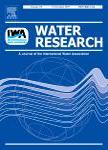版权所有:内蒙古大学图书馆 技术提供:维普资讯• 智图
内蒙古自治区呼和浩特市赛罕区大学西街235号 邮编: 010021

作者机构:ELSA UMR ITAP Irstea F-34196 Montpellier France Veolia Eau dIle De France F-92739 Nanterre France ENSCBP Bordeaux INP ISM CyVi F-33607 Pessac France
出 版 物:《WATER RESEARCH》 (Water Res.)
年 卷 期:2016年第88卷
页 面:69-82页
核心收录:
学科分类:0830[工学-环境科学与工程(可授工学、理学、农学学位)] 08[工学] 0815[工学-水利工程]
基 金:Veolia Eau d'Ile-de-France French National Association for Technical Research (CIFRE) [0418/2011]
主 题:LCA Modeling Urban water system Object oriented programming
摘 要:The emphasis on the sustainable urban water management has increased over the last decades. In this context decision makers need tools to measure and improve the environmental performance of urban water systems (UWS) and their related scenarios. In this paper, we propose a versatile model, named WaLA (Water system Life cycle Assessment), which reduces the complexity of the UWS while ensuring a good representation of water issues and fulfilling life cycle assessment (LCA) requirements. Indeed, LCAs require building UWS models, which can be tedious if several scenarios are to be compared. The WaLA model is based on a framework that uses a generic component representing alternately water technology units and water users, with their associated water flows, and the associated impacts due to water deprivation, emissions, operation and infrastructure. UWS scenarios can be built by inter-operating and connecting the technologies and users components in a modular and integrated way. The model calculates life cycle impacts at a monthly temporal resolution for a set of services provided to users, as defined by the scenario. It also provides the ratio of impacts to amount of services provided and useful information for UWS diagnosis or comparison of different scenarios. The model is implemented in a Matlab/Simulink interface thanks to object-oriented programming. The applicability of the model is demonstrated using a virtual case study based on available life cycle inventory data. (C) 2015 Elsevier Ltd. All rights reserved.